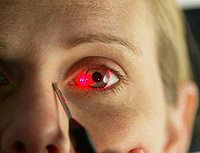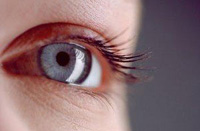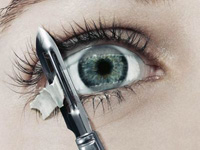Medical and Surgical Cataract Treatment. What to choose? What is the feature of the other treatment? You can read more in the article.
Content
Medical treatment of cataracts
Medicometallic conservative cataract treatment is applied at the stages of the initial turbidity of the lens. The goal of drug treatment is the slowdown of the progression of the lens.
To improve nutrition, the normalization of exchange, decrease water loss with lens, combined eye drops containing amino acids, vitamins, iodine, glucose, glutamic acid are prescribed.
- Offantan-Katova
- Sanotalin
- Vitayoddurol
- Queenax
- Vicein and others.
This treatment may make it possible to slow down the process of cataract development, but no reverse development occurs.
Surgical treatment of cataracts
The surgical method today remains the main method of cataracting and returning vision. The best results are obtained by removing mature cataracts. But when determining operational treatment, it is guided mainly to the function of the view of both eyes. If the cataract exists on the one hand, and the vision of the second eye is saved, the operation can be postponed until cataract maturation. When reducing vision on both eyes, operational treatment can be accelerated. With a mature cataract, it is dangerous to postpone the operation, as the attack of acute glaucoma can develop with full loss of view.
Before surpassing, the patient must be examined in detail. Related diseases should be treated and translated into the compensation stage. Sanitation of the oral cavity is prescribed, treatment of hypertension and T.D.
Removal or lens extraction is currently produced in two ways:
- Extracapsular (opening of the lens capsule and the deletion of the only part)
- intracapsular lexing leak (Removal of lens in a capsule through a big cut)
When intracapsular extraction lens lens to remove with a capsule. After cut, the lens is removed using a capsule tweezers, eryzofak – Special sucker or cryoxtraction method.
Cryoxtraction– This is a method for fracturing a lens to a chilled metal tool, followed by a lens extract.
 After removing the lens with a capsule on the wound impose seam.
After removing the lens with a capsule on the wound impose seam.
With extracapsular The method of removal is cataracting the front capsule of the lens and squeezes the kernel, and the crustaceans are sucking with a special device. Crustal ligaments and lens bag are preserved in the eye. This allows you to keep the vitreous body, the loss of any part of which is extremely undesirable. In addition, an artificial lens can be placed in the remaining capsule.
A cut with these cataract removal methods is wide and this may lead to the development of postoperative astigmatism. Therefore, today the methods of cataract extraction are developed through microscopes in the cornea and scler, from 3 to 4 mm wide. At the same time, the whole lens or its kernel cannot be removed and various methods for its crushing are used to deract crust.
Focofragmentation – This is a mechanical crushing of a lens using the device with vitreotom, photoemulsification – crushing kernel lens ultrasound. At the same time, the crustal kernel is first crushed with the help of an ultrasonic device, and then suck destroyed masses. This method is especially effective if the substance is dense. If crusting masses are softened, this method does not apply.
There is also a crushing method of a lens kernel with laser radiation. Laser energy is used for removing the turbid rear capsule of the lens with a film cataracts. The use of modern techniques made it possible to achieve the best results in the treatment of cataracts.
After the removal of the cataract occurs a condition at which the lens is absent –Afakia. At Aphakia there is a strong hyperbating, so correction is necessary.
Various methods are used:
- Wearing glasses
- Implantation of intraocular lenses
- Refractive epichealthoplasty.
In some cases, wearing glasses are possible, but it is accompanied by limiting field fields and with one-sided removal of cataracts, the use of glasses is impossible.
It is possible to use contact lenses in children, but their use is limited to the occurrence of individual intolerance, allergic reactions, infectious complications. The best effect is obtained by introducing intraocular lenses. These lenses can be annexamic, iris clips lenses, rebon-dimensional. The best result is obtained when applying the zadon-dimensional lenses.









